Vaudeville, which replaced minstrelsy while absorbing many of its attributes, made liberal use of ragtime, jazz, and blues.[1] Among the enduring performers to come up through vaudeville were , W.C. Fields, Abbott and Costello, the Three Stooges, and George Burns and Gracie Allen. The musicians included Sophie Tucker, Jack Benny, and Al Jolson. They were the link between the centuries, between the old coons and the new condescension. They softened the stereotypes, gradually. They participated in the building of an industry that would come to entertain—and in some ways control—millions. The styles and formats of vaudeville, or variety, would persist on Broadway, in the movies, and longest still in TV sitcoms and variety shows.
[1] Satirical songs were big in the vau de Vire, a valley in Normandy, France, in the 15th century, and the modification vaudeville (literally, valley of town) came to describe a variety of variety entertainments. (Clarke, 44.) For samples, see memory.loc.gov/ammem/vshtml/vshome.html , tinfoil.com , vaudeville.org
The nascent Broadway musical industry, which until the 1910s had been dominated by European styles, began to take notice of changing popular styles, which is to say jazz.[i] Up to this time, the primary influences on Broadway musical theater had been the French comic opera (opéra bouffe), notably Offenbach (Orpheus in the Underworld, 1858; Tales of Hoffman, 1881); and Viennese operetta (Johann Strauss II, Die Fledermaus, 1874; and Franz Lehár, The Merry Widow, 1905). The British light opera wizards, Gilbert and Sullivan (H.M.S. Pinafore, 1878; Pirates of Penzance, 1880; The Mikado, 1885), brought wit, plot and brilliantly clever songs to the equation; their productions were the very model of a modern major musical. Pinafore played in twelve theaters, and was produced in some with all-Black casts.
The American composers were led by European immigrants: Dublin-born Victor Herbert, who dominated the “charts” (Babes in Toyland, 1903); Hungarian Sigmund Romberg (The Desert Song, 1926); and Czech Rudolf Friml (The Three Musketeers, 1928).
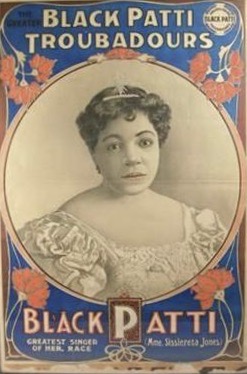
The immediate prehistory of Black Broadway commences with Sissieretta Jones, an important opera singer known as “Black Patti.”[2] Despite wide acclaim and having sung for three Presidents and Queen Victoria, she was blocked from receiving her operatic due by virtue of color. In 1896 she founded Black Patti’s Troubadours, comprising 40 jugglers, comedians, dancers, and singers who amalgamated vaudeville, minstrelsy, musical review, and grand opera. Their shows included A Trip to Africa (1909-10), In the Jungles (1911-12), Captain Jaspar (1912-13), and Lucky Sam from Alabam’(1914-15).
The troupe included Bob Cole, an ambitious and talented writer who in 1898 produced A Trip to Coontown, the first New York musical put together entirely by African Americans. It was seen as a significant break from the minstrel mode.
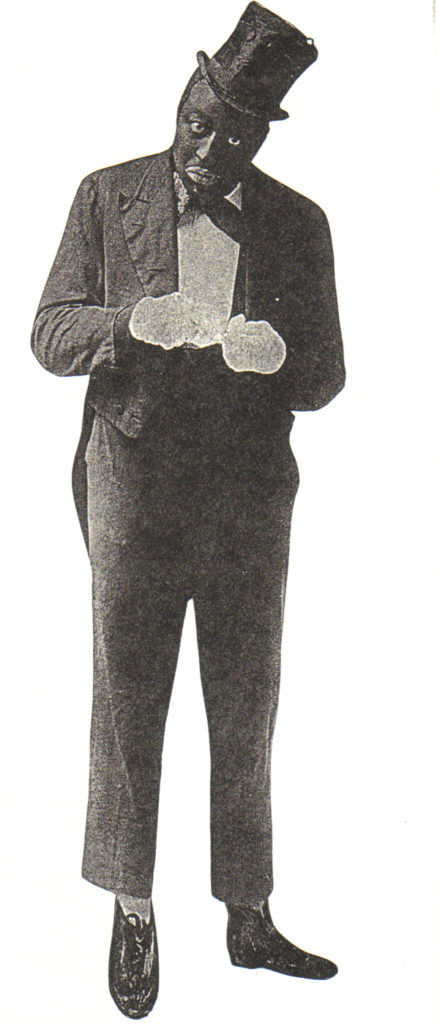
Subsequent Black Broadway productions included Will Marion Cook’s Clorindy or The Origin of the Cakewalk(1898) and In Dahomey (1903), which starred Bert Williams and George Walker. Dahomey was a hit in England first, then returned home in triumph like Jimi Hendrix. Clorindy, featuring Ernest Hogan, took New York by storm, providing the first staged version of African American syncopation.[ii] American culture never recovered. In 1905 Cook brought together twenty crack players of banjo, mandolin, guitar, sax, trumpet, trombone, violin bass, and drum in the “Memphis Students,” an aggregation that broke the mold of both popular orchestras and Black musical style. It enlarged on folk roots; by 1920 they had, together with Jim Europe, converted Europe. And parts of America.
Williams and Walker, by the way, were not above a little back door self-promo; their 1898 hand-delivered letter to William K. Vanderbilt—son of Cornelius, and in his day the richest man in the country—provides us with an amusing first-hand document regarding the ability of White power networks to appropriate Black creations:
In view of the fact that you have made a success as a cake-walker…and having posed as an expert in that capacity, we, the undersigned world-renowned cake-walkers, believing that the attention of the public has been distracted from us on account of the tremendous hit which you have made, hereby challenge you to compete with us in a cake-walking match…”[iii]
Recall that this dance originated as a satire on Master’s manners. (In this case, Black musician Tom Fletcher had taught the dance to the Vanderbilts.) Though Williams and Walker offered a purse of $50, there is no record of a reply. But their dancing in Dahomey triggered a cake-walk craze in England and France in 1903, something that would repeat itself as dances and musical styles jumped the pond in the coming century.
In 1899 the English composer Leslie Stuart premiered Florodora, with jazz-inflected music updated from minstrelsy. It was a smash, and inspired many composers; Stuart became the idol of Eubie Blake.[iv]
Most Black songwriters of that era labored in obscurity and lie there in state today. They could not procure concert halls, agents, or other necessities, and if their songs were made into hits by White singers, it didn’t help them much. Who wrote “Sweet Georgia Brown?” No less than Maceo Pinkard. His tunes were recorded by the Original Dixieland Jazz Band, Paul Whiteman, Fletcher Henderson, and many more. He was very famous in his own house.
With the death in quick succession in 1911 of George Walker, Bob Cole, and Ernest Hogan, Black performers lost their high profile on Broadway, giving way to the next wave of writers and to blackface operators like Al Jolson and Eddie Cantor.
Back in the bright lights, composer George M. Cohan brought in more American musical forms, including brass marching band styles that had evolved a bit from their European origins. His songs included “Over There,” “You’re A Grand Old Flag,” and “Give My Regards To Broadway.” He was a major figure in the Americanization of American theater.
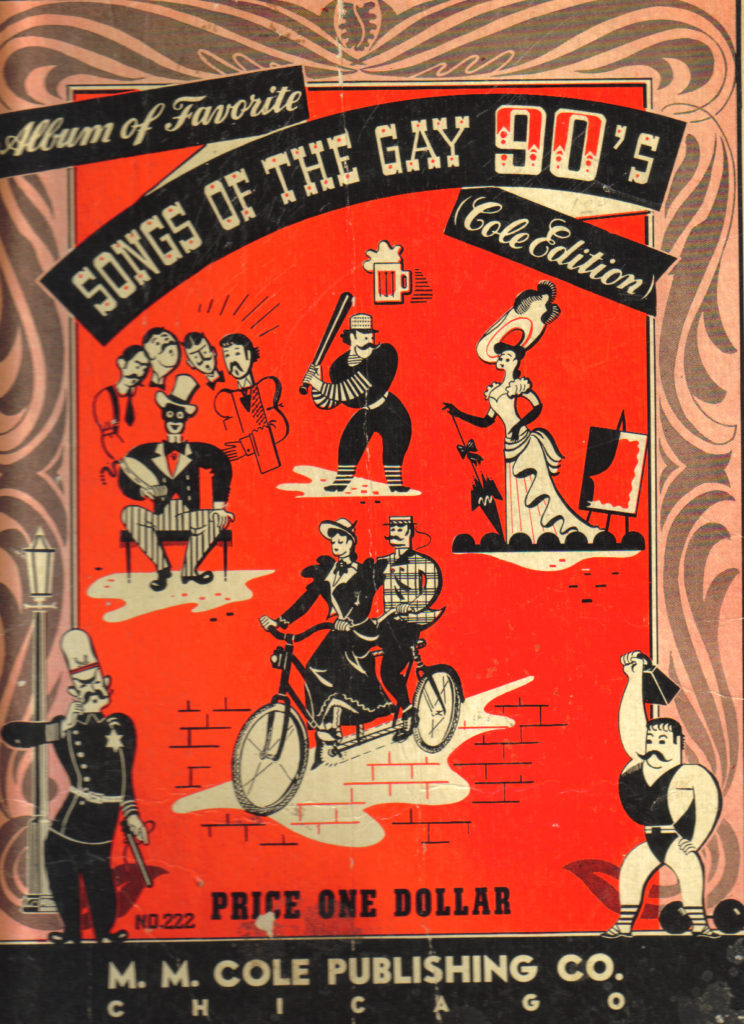
One of the leading writers for the marching bands was John Philip Sousa, who drew heavily on ragtime, cakewalks, and other southern Black folk music. Barroom and parlor ballads, characteristic of the “Gay Nineties,” also came into play—songs like “The Sidewalks of New York” and “Shine On, Harvest Moon.” These tunes were influenced by English and German music hall traditions, and also by ragtime.
Today we tend to think of this period as a shimmering musical era peopled with gifted White composers; we are mostly unaware of the essential Black component of the music, the cakewalks and rags on which so much of New York’s song industry based its product and profit.
Irving Berlin was the first composer to bring jazz to the White Broadway musicals. He wrote in a variety of styles, out-Cohaning Cohan with “There’s No Business Like Show Business” and “God Bless America,” and putting Bing on top with “White Christmas.” He got involved with ragtime, from which he made a lot of money; he later said “I never did find out what ragtime was.” His first big hit, Alexander’s Ragtime Band (1911), wasn’t really ragtime, mostly, though Scott Joplin did claim that Berlin took the melody from his opera Treemonisha.[v]” Either way, the title sparked a craze that had been smoldering, waiting to catch fire.
Before his songwriting success, he played Black, Italian, Irish, German, and Jew as a singing waiter in a Chinatown slumming joint called “Nigger Mike’s.” Which was in fact owned by another Russian Jew. At Mike’s he learned ragtime piano from a Black pianist, Lukie Johnson. Berlin’s song “I Love A Piano” was an ode to the African pentatonic scale (black keys) and employed syncopation and mock-Black dialect. But the more success he achieved, the more he downplayed his debt to Black culture—and his Jewishness.[vi]
Berlin proved to be a very savvy operator in the musical market, and his tunes were later covered in jazz versions, as were the songs of most of the major Broadway composers, especially the jazzier ones. In other words, not only do “jazz musicians play show tunes,” but show tunes are themselves based as much on jazz as anything else. Or were—but that story is yet to come.
Ragtime opened the door to the Jazz Age, and Berlin wrote many a jazz-inflected tune for Broadway, some of which appeared in a series of revues called The Ziegfeld Follies. Florenz Ziegfeld had been the music director of the Chicago World’s Fair in 1893, where early ragtime pianists appeared. His Follies featured the remarkable Jewish singer Eddie Cantor, known for his blackface numbers, and the beloved Black singer Bert Williams (formerly a minstrel player), who was also obliged to cork up. In fact, Williams and his partner George Walker billed themselves as “Two Real Coons,” just so’s you’d know.[vii] Soon everyone knew, and violent racist reactions forced Williams’ silent films off the market.[viii] It was, as noted above, a time when the race question had come to the fore. As Martin Williams wrote in his 1977 liner notes for the LP “Ziegfeld Follies of 1919,”
[Most] of the songs in this set are written and delivered full of Afro-American musical devices and would-be Afro-American attitudes. That is, in a kind of musical and cultural blackface, if you will…One could argue, with much validity, that here was the United States attempting to confront one of its most urgent, unsolved, even unrecognized problems—its race problem—on the level of popular entertainment…In any case, the enormous (and largely unconscious) effort on the part of white Americans somehow to absorb the patently irresistible culture of Black Americans is as evident here in 1919 as it is today at any suburban high school dance.
Many of the jazzy musical arrangements were written for Ziegfeld by Will Vodery, the group’s music supervisor for 22 years. Many dancers were taught by Billy Pierce. Ford Dabney was a sometime conductor of the orchestra. These African American talents produced, for a White audience, a White show full of hidden Blackness—Williams hiding his own under another layer of Black. James Weldon Johnson maintained that New York, the primary force in American musical theater, could not have happened without Harlem.[ix]
Berlin was followed by George Gershwin (Lady Be Good, 1924; Funny Face, 1927; Girl Crazy, 1931; Porgy and Bess, 1935). Gershwin wrote what might be described as a variation on jazz, though Zora Neale Hurston called him “about as Negro as caviar.” Still, he was a dedicated fan of Black musicians; and his music moved White Americans toward jazz. He studied Gullah dialect on a South Carolina island for Porgy, another milestone show dealing with Black life. His songs, including “Fascinatin’ Rhythm,” “I Got Rhythm,” “Summertime,” “Nice Work If You Can Get It,” and “Let’s Call the Whole Thing Off,” were popularized by many musicians, Black and White. He also penned jazzy symphonic pieces like Rhapsody in Blue, commissioned by Paul Whiteman.
Harold Arlen was hooked by jazz early, and had a penchant for the blues, e.g., “Stormy Weather,” “My Mama Done Told Me,” “I Gotta Right to Sing the Blues,” and “Blues in the Night.” He also wrote the melody for “Somewhere, Over the Rainbow,” a most un-jazz number that was later jazzed up by a number of artists. But his most interesting distinction, to my mind, was being a staff writer for the Cotton Club in the early thirties, as replacement for McHugh and Fields (see below). With Ted Koehler he wrote hits for Cab and Duke, Lena Horne and Ivie Anderson, including “Kickin’ the Gong Around,” “Stormy Weather,” “It’s Only A Paper Moon,” “Let’s Fall in Love,” and “Minnie the Moocher’s Wedding Day.” He also wrote for a Black Broadway show, St. Louis Woman, collaborating with Johnny Mercer. He was accepted in Black musical circles as an equal, something that seems to happen most often in the arts and sports.
Cole Porter, the consummate sophisticate, blended jazz with operetta (Gay Divorce,[3] 1932; Anything Goes, 1934, Silk Stockings, 1955). Among his most endearing and enduring songs were “Night and Day” and “In the Still of the Night,” “Let’s Do It,” “Begin the Beguine,” “Most Gentlemen Don’t Like Love,” and “Don’t Fence Me In
.[3] Changed to Gay Divorcée for the movie.
__________________________________
AL JOLSON
Russian Jewish immigrant Asa Yoelson was America’s first superstar pop singer. His fame derived largely from his blackface act. As George Burns said, “Jolie was a cantor’s son, and everybody thought his mother was a mammy.” Well, he sang “My Mammy” (written by Maceo Pinkard), and pretty well. He also sang songs by Gershwin, who must have been embarrassed by the blackface shtick, given the respect he was trying to foster for jazz.
Jolson joined Lew Dockstadter’s (blackface) minstrels and played “the Black Peter Pan” and other “darkie” roles on Broadway in the 1910s and 20s. His most famous movie, The Jazz Singer (1927),spotlights the commonalities between Yiddish music and jazz. The plot details his struggle between (blackface) show biz and Jewish religious loyalty.
In addition to heisting Black faces, he lifted his signature shout, “You ain’t heard nothin’ yet,” from Joe Britton, a Black vaudeville actor.[x]
___________________________________
Throughout the twenties and thirties, jazz and operetta coexisted, within a single show, often within one song. The work of Jerome Kern (Show Boat, 1927; Swing Time, 1936) was a good example. Show Boat was a major milestone, the first native-spun Broadway musical with a coherent plot, and one based on a story about racism at that. The lyrics were by Oscar Hammerstein II. The tunes became standards, including “Can’t Help Lovin Dat Man,” “Smoke Gets In Your Eyes,” and “All The Things You Are.”
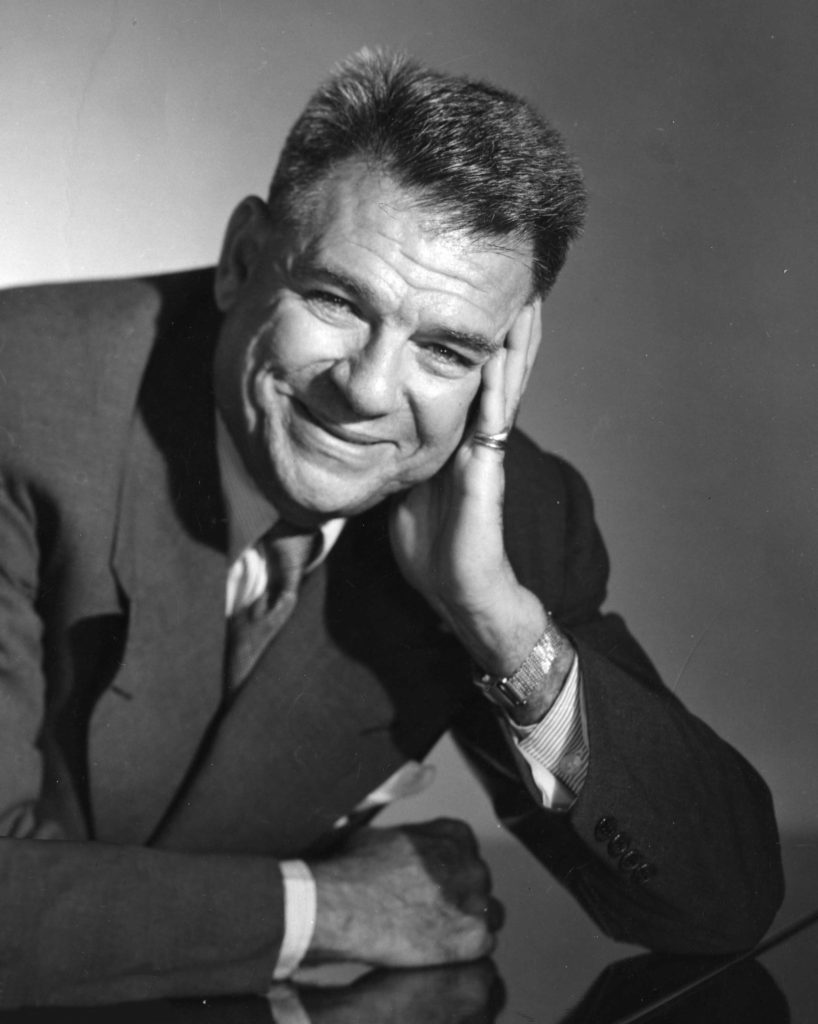
Hammerstein was the nephew and namesake of a Viennese immigrant impresario. Although he was surrounded by composers making use of jazz, and was himself a staunch proponent of the Black freedom movement, Hammerstein never came to terms with syncopation, polyrhythm, and everything that was jazz. He never left the old country behind in his work and always nudged his collaborators’ styles toward Vienna. He accomplished this partly by writing the lyrics before the music was conceived. The best and worst example of Hammerstein’s mix of pro-Black work in non-Black genres was the 1954 movie “Carmen Jones,’ in which the all-Black cast sang the Hammer’s lyrics to Bizet. Well, not sang, exactly: operatic singers were dubbed in—even Harry Belafonte lip-synched as the professionals intoned “da” for “the” and “dis’ for “this.” To many, this seemed like trying to have it both ways; in fairness, some liked it. In retrospect, it was not the best of times for Black culture.
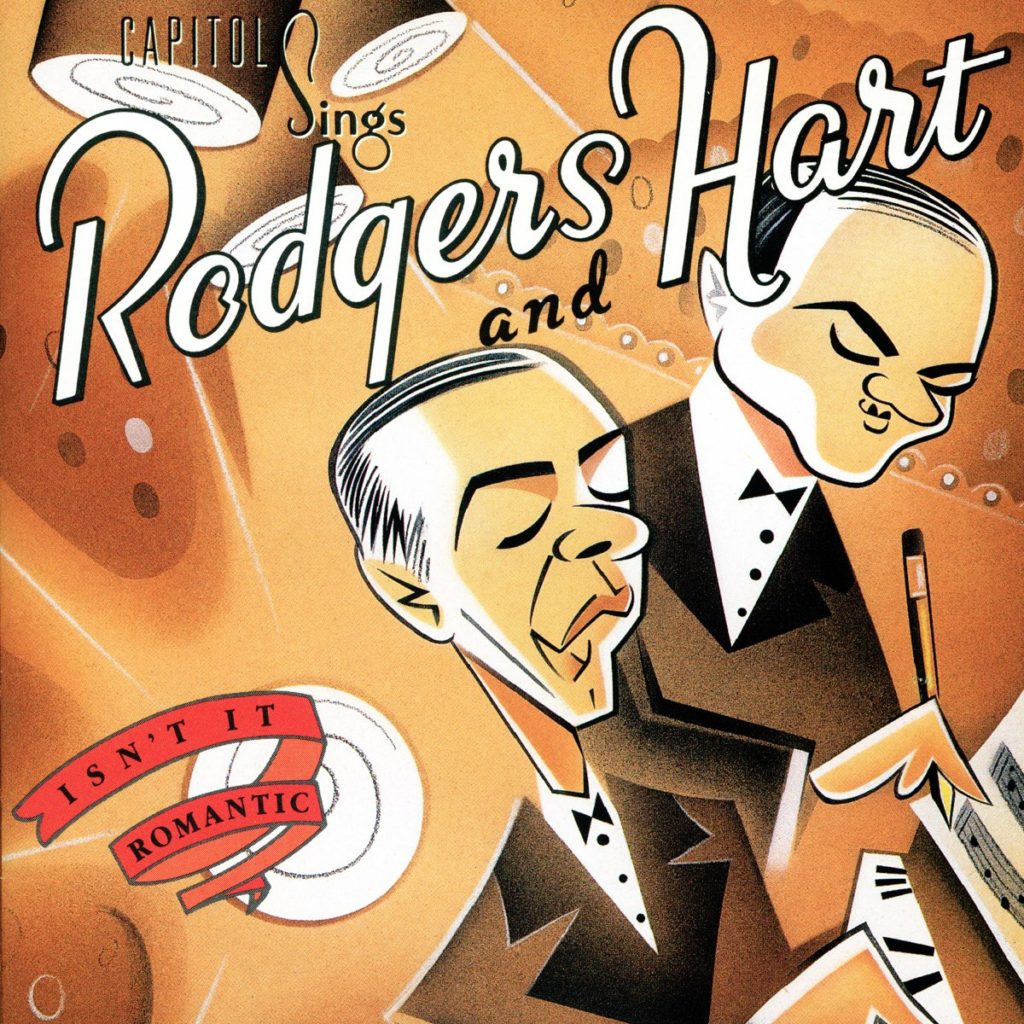
Richard Rodgers would come to work with Hammerstein; Rodgers’ earlier collaborator, Lorenz Hart, by contrast, was a lyricist decidedly jazzy in his taste: bouncy, colloquial, brash, always bending and stretching the musical structure.
Most of the jazzy Broadway composers were Jewish. It’s no accident that Jewish writers and composers were prevalent among those who interpreted African‑American music for White America. Jews had a long tradition of marginalization and homelessness, the soul of the outsider, empathy for other oppressed peoples. Many worked in the arts. The thousands of persecuted Jewish émigrés who arrived around the turn of the century were kept out of most of the respectable businesses, so as always they went into whatever was permitted. Traditionally this included writing and music, followed by publishing and show business.
Jewish composers assimilated America’s culture and wrote their version of it, much as Irish minstrels had in the previous century. In Europe many had been salesmen; now they sold songs. In effect, they sold America its own subcultures. This was a service by which mainstream America has been culturally enriched, though it was not always to the financial benefit of the music’s originators. From 1920, Black entertainers circulated on the circuit organized by the Theatre Owners Booking Association (TOBA), also known as Tough On Black Artists (or Asses). They averaged $20 a week.
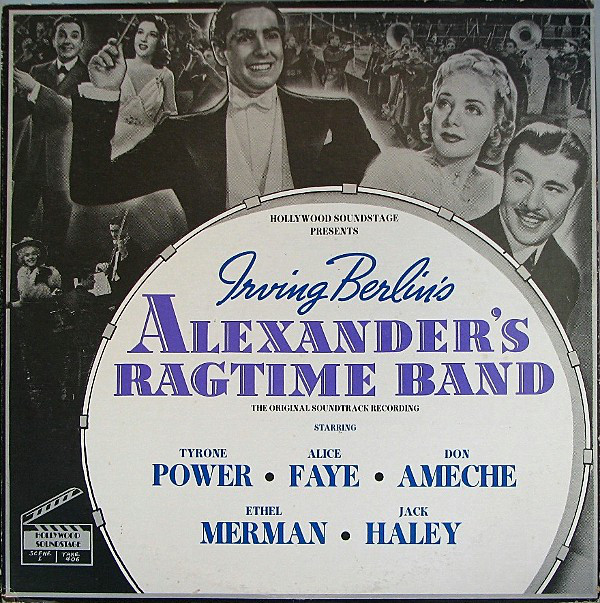
The New York tunesmiths essentially monopolized access to the song-buying public through their song-publishing organization, the American Society of Composers, Authors and Publishers, or ASCAP. This gave them status in the industry, but did little for those who were the source of the styles. Although some of the more successful writers, like Berlin and Kern, were generous to ASCAP’s lesser known writers, it didn’t help the folks down on the farm and in the poor neighborhoods that birthed the music. As Tony Palmer described it, “Alexander’s Ragtime Band was not so much White or Jewish genius as a notice that whatever the Black musician invented, the White music industry was sure to steal.”[xi]
In fairness to the songwriters, it was often the publishers who were the control freaks. Writing of the publishers’ practice of buying songs for ten dollars, E. Simms Campbell adds:
These smart publishers would keep the scores of songs stowed away in drawers…and at a propitious time they would revise here and there—change the title and lo!—a popular hit tune was often launched on the market in New York. It often made a song writer who never would have reached the top, unless he had the ideas of these Negroes to fall back on.
Simms distinguished between early New Orleans jazz composers and other budding songwriters:
True, many a white musician shared the same fate, but he was not continually relegated to the bottom as were these early-day Negro pioneers.[xii]
Fats Waller and his writing partner Andy Razaf (Andreamenentania Paul Razafinkeriefo—he hailed from the royal family of Madagascar, a long island with long names) hit on the idea of selling their songs to several publishers on the same day, to get back at them for not paying royalties.[xiii]
The song publishers held sway until the radio industry, in a tiff with ASCAP over royalties, formed its own publishing company (Broadcast Music, Inc., or BMI) in the thirties. This gave the folks who actually created the source material—southern Blacks and Whites, along with Latin American stylists—their first chance to get their own creations aired.[4]
[4] Another factor in widening the talent pool was Chicago’s industrial base. When the demand for phonograph records spread, it outstripped New York’s ability to produce, and the task fell to Chicago. The western producers set out for the South to record the hillbillies and blues artists,
making an end run around Tin Pan Alley.
Industry shenanigans aside, Jewish immigrants made lasting contributions to the popular arts. Later, in the forties, Jewish entrepreneurs living in Black communities would start up the first independent record labels dedicated to bebop and rhythm and blues.[xiv] Jerry Leiber and Mike Stoller, a Jewish songwriting team, wrote loads of R&B hits for Black acts in the fifties. And Jewish‑American and African‑American humor as well as music have a long common history; together with the Southern and Western traditions exemplified by Mark Twain[5] and Will Rogers, they largely defined American humor. The vaunted Jewish tradition in humor took on new forms in America that were strongly influenced by Black comic traditions.
[5] Here’s another American icon who drew much of his inspiration for his books and lectures from Blacks: he was raised on Uncle Remus, Br’er Rabbit, and the Fisk Jubilee Singers.
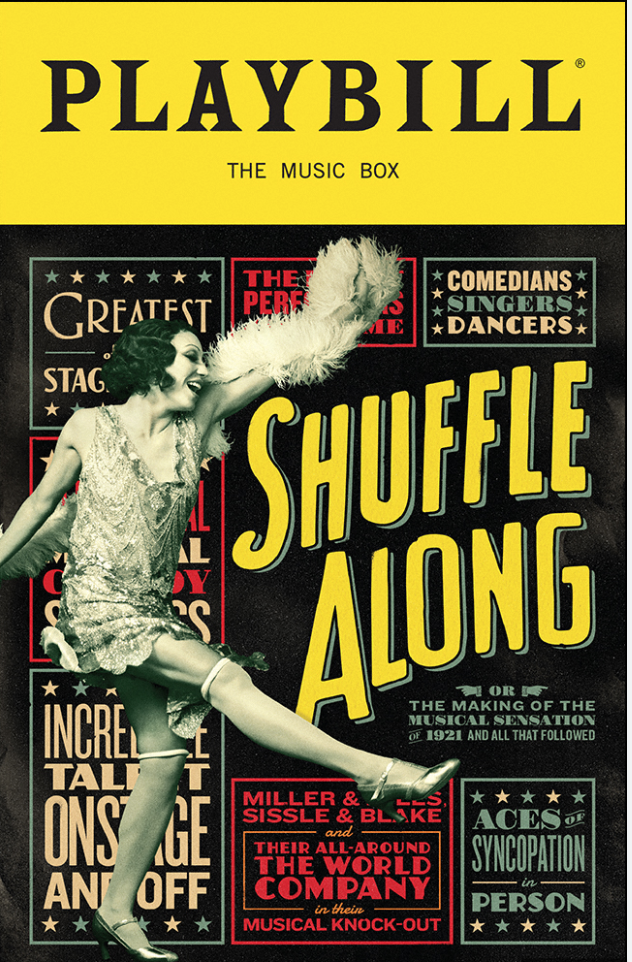
In the twenties, the “Jazz Age,” African‑American music captured the hearts and feet of the nation; Black dance styles took America by storm. In 1921 Noble Sissle, who had worked with Jim Europe, teamed with Eubie Blake to mount a Black musical on Broadway, Shuffle Along, which ran for over 500 performances. It featured Florence Mills and also Josephine Baker, who later became a star in Europe. Ziegfeld hired some of the show’s cast members to teach his White dancers the Charleston. The popular Black dances of the era came to be associated with flappers—in other words, White folks—Ziegfeld’s teachers being blacked out. And in their effort to appeal to a wider/Whiter audience, Sissle and Blake subsequently stumbled on the slope of crossover commerce. As a reviewer said of their show “In Bamville,”
This show seems to suffer from too much white man…There is too much politeness, too much platitudinous refinement and not enough of the racy and the razor-edged.[xv]
Either that, or it didn’t fit in with the chap’s stereotypes.
In 1923 James P. Johnson wrote the song “Charleston” for Runnin’ Wild, and the dance took the nation by storm. Blackbirds of 1928, including “I Can’t Give You Anything But Love, Baby,” was a Black show written by a White team, Dorothy Fields and Jimmy McHugh. The show featured Bill “Bojangles” Robinson. In 1929 Louis Armstrong played “Ain’t Misbehavin'” in Hot Chocolates.
Under the relentless steamroller of commerce, Black dance styles were mashed into milder versions to be purveyed by and for Whites, and precious few consumers of cultural commodities ever since have thought to question the roots of the moves. A slavery-era step called the Essence became the softshoe, the basis of half of modern tap dancing, and Buck and Wing became hard shoe, the other half. Dance styles from West Africa, adapted in America, were acquired for Broadway and the nation at large.[6] Commerce, abetted by racism, produced a counterfeit culture. As Ann Douglas noted,
It was part of the ethos of the day that white performers absorbed African-American art and performance styles, sometimes consciously, sometimes not. It was understood on Broadway: You started black or ethnic and got whiter and more WASP as, and if, success came your way. It was a class pattern as much as a racial or ethnic one—black to white, ethnic to Wasp, lower class to upper.[xvi]
[6] The Elvis of social dancing was Fred Astaire, a superb dancer who paid tribute to Bojangles and used his act of dancing up and down stairs on film. Robinson danced the stairs in “Blackbirds of 1928” and later with Shirley Temple in “The Little Colonel,” but others had stepped up and down before, including King Rastus Brown, a vaudevillian (and in 1895 a member of Black Patti’s Troubadours)
who around 1910 accused Robinson of stealing the routine.
But then, he borrowed it from someone, too…(Stearns, 1964, 179.)
The master of smooth did an extensive study of the moves of Robinson and also of John Bubbles (John William Sublett), of Buck and Bubbles dancing fame, but failed to mention their contribution to his work in his memoir. (Douglas, 11)
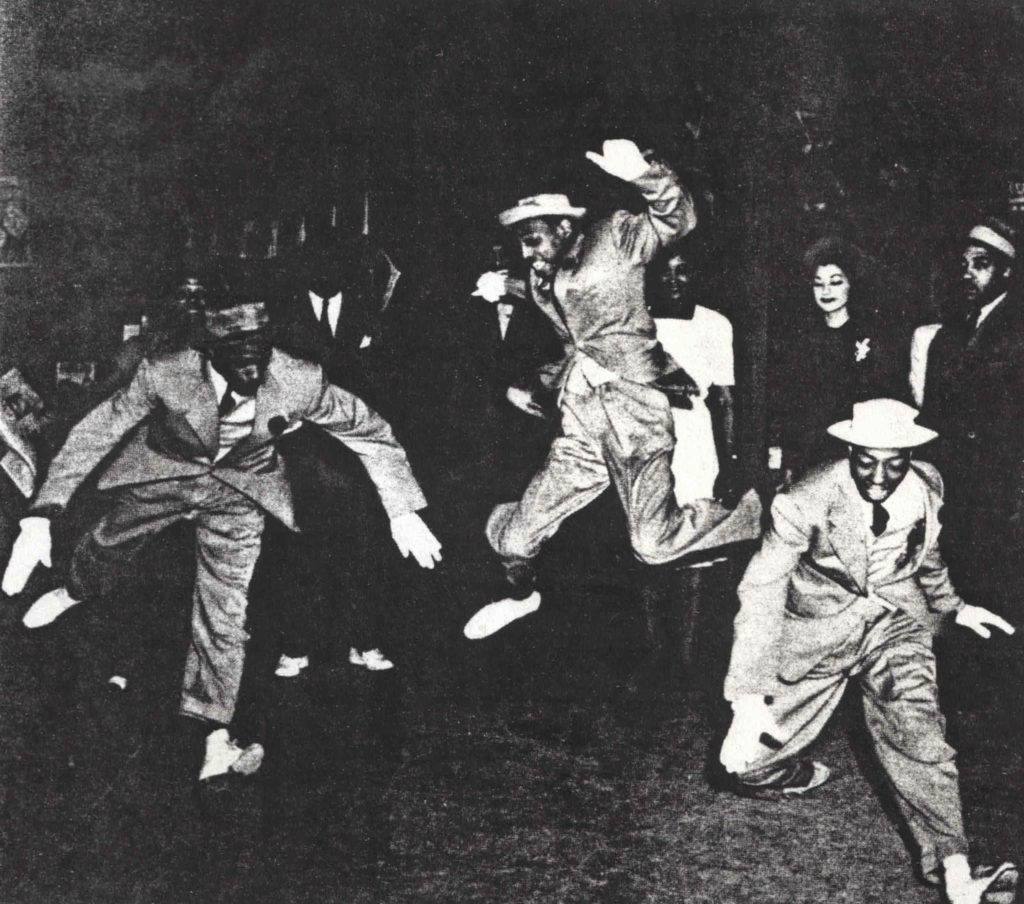
[i] Much of the information in this section comes from an interview with musician/historian Peter Sokolow in New York, 1993.
[ii] Weldon Johnson, 1930, 103.
[iii] ibid., 105.
[iv] Rose, 18.
[v]http://www.edwardaberlin.com/scott_joplin__brief_biographical_sketch___33423.htm
[vi]Douglas, “Siblings and Mongrels,” 10-11.
[vii] Jenkins, 184-85.
[viii] Clarke, 63.
[ix] Weldon Johnson, 1930, 225-6.
[x] Douglas, 8.
[xi] Palmer, 17.
[xii] E. Simms Campbell, “Early Jam,” The Negro Caravan, 985.
[xiii] Clarke, 235.
[xiv] Clarke, 270.
[xv] Ashton Stevens, Chicago Herald and Examiner, March 31, 1924.
[xvi] Douglas, 11.
